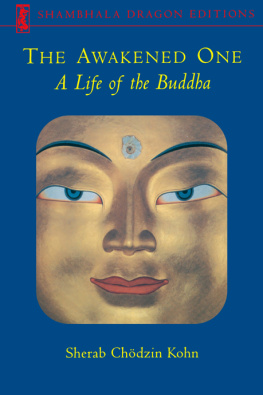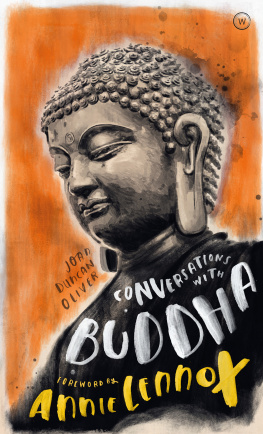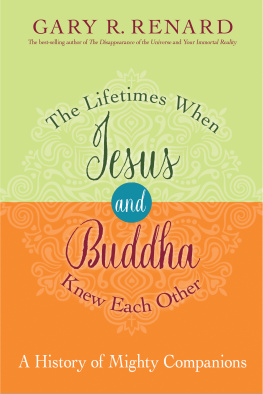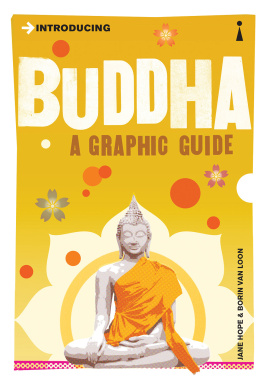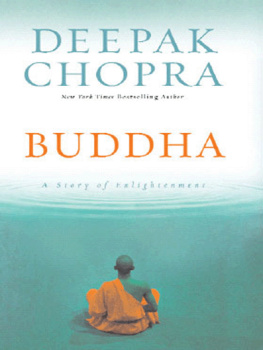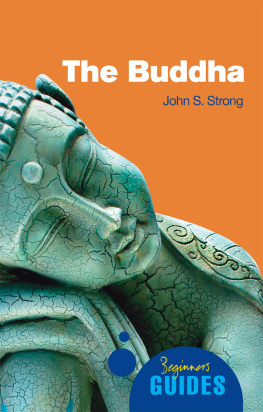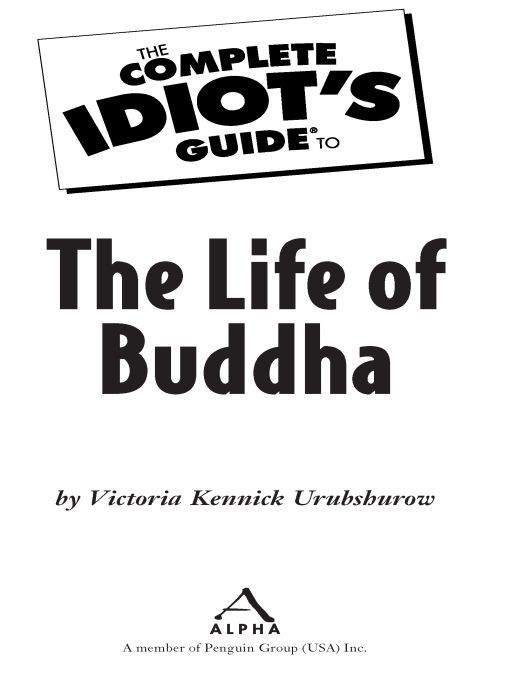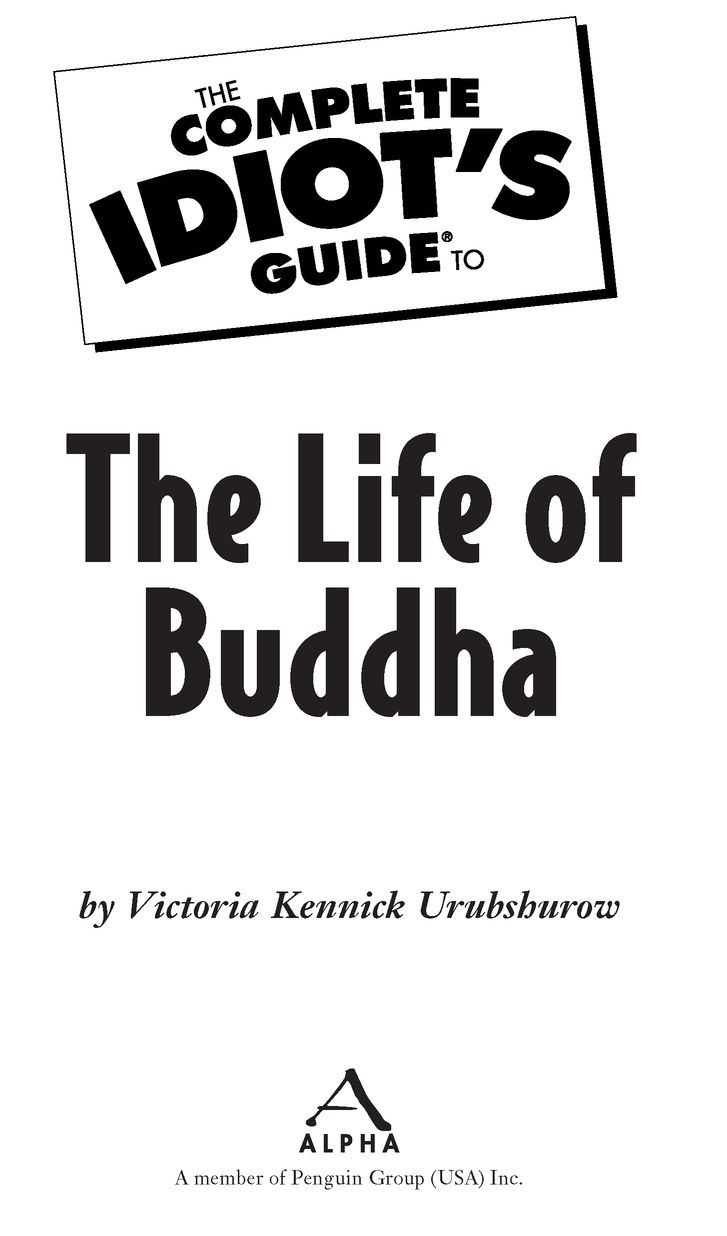Table of Contents
This work is dedicated to my teacher, the Venerable Geshe Ngawang Wangyal.
Introduction
Welcome to the world of ancient India! Before you begin the journey into Buddhas life and times, lets look at a few names that traditionally have been applied to the man who woke up. Youll see them plenty of times in the pages ahead, and its nice to be aware of what means what.
The word Buddha is actually a title coming from the Sanskrit root budh, to awaken or enlighten. Hence, Buddha is the Awakened or Enlightened One. Up to the time of his awakening, hes called Siddhartha (One Whose Aim is Accomplished) or the Bodhisattva (Buddha-to-be). He was dubbed Maha Sramana (Great Striver) after taking up the homeless life. Hes called Gautama any time, for thats his family name. After his enlightenment, people called him Sakyamuni (Sage of the Sakyans) because he was born into the Sakya clan. But above all after waking up he liked to call himself a Tathagata (Thus-gone One).
Tathata is the Sanskrit word for reality as it is. It means thusness, just so, or just like that. And thats what waking up is all about: seeing what is just so, and being just like that. After reading this book, youll have a much better idea why Buddha best liked to call himself Tathagata, meaning one who went (gata) according to tathata. A person who lines up with tathata remains clear, insightful, and compassionate through thick and thin.
Wow! Well, for such a remarkable person, its natural that various names would be used to capture different aspects of Buddhas character. Just look at Appendix B, People and Places, to see a list of Buddhas names. In fact, make use of the glossary in Appendix A, too.
In books about Buddhas life taken off a shelf almost anywhere, youll find that names and concepts are given according to either their Sanskrit or Pali form. Ive chosen to go with the Sanskrit language versions of most words, given a choice. But the Sanskrit and Pali are so close as to be basically interchangeable. Again, just hit Appendixes A and B anytime for clarification. Before you know it, youll have this all down pat!
Your Complete Idiots Guide presents Buddhas biography in a rich format that allows you to find out about his culture, personal life, community, and teachings. Feel free to skip to your favorite partsand build up from there. No matter which way you approach this book, it should lead you to a deeper understanding of Buddha and what it means to wake up.
What Youll Find in This Book
Part 1, The Buddha in Historical Context, discusses the life of Buddha, a sacred biography about a man who woke up from the sleep of ignorance. Traditional biographers wove extraordinary events into his story, and youll see how their symbolic language reflects Buddhist ideas about reality. To bring this great historical figure squarely into focus, youll see Buddhas spiritual journey in terms of a worldwide quest for understanding. This involves a look at Buddhas near contemporaries in Greece, the Middle East, India, and Chinasuch as Pythagoras, Socrates, Jeremiah, Zoroaster, Confucius, and others. Finally, youll take a good, long look at northern India in Buddhas day.
Part 2, The Making and Breaking of a Prince, is the story of Buddhas early years, chock-full of mythic details. Culture abhors a vacuum, so gods, elephants, and flowers rush to fill the gap left by historical records. Yet youll see that within the sacred story lies a psychologically compelling tale of personal indulgence, disillusionment, and determination. The daily life of Prince Siddhartha (Buddhas youthful name) becomes even more interesting in light of his culture, set in the Himalayan foothills.
Part 3, Waking Up: Siddhartha Becomes a Buddha, is an account of Siddharthas spiritual journey from the moment he gave up his privileged life as a prince of the northern Indian Sakya clan through his return to the world after enlightenment. Youll see how Buddha went on an intensive six-year quest, woke up to the nature of reality, set up a spiritual community, and convinced his family that he wasnt a failure.
Part 4, Nobody Teaching Nothing, discusses how the Four Noble Truths encompass all Buddhas teachings, as an elephants footprint holds all other footprints on the forest floor. Youll ponder the great facts Buddha taught about suffering, its causes, its cessation, and the path to end suffering. Youll also find out how mindfulness of ones body and mind can lead to a profound understanding of the Buddhist concept of nonself.
Part 5, Buddhas Disciples, recounts how after Buddhas enlightenment, a diverse spiritual community gathered around him. Youll meet the men and women of his mendicant community and the lay disciples from many walks of life. Youll also get wind of extraordinary feats that some disciples accomplished through meditation. Last but not least, youll hear the inside scoop on political intrigue and jealous detractors who sometimes made life tough for the Tathagata.
Part 6, Buddhas Great Decease and Legacy, details how Buddha traveled extensively in the final year of his life and left a powerful legacy. Youll follow Gautamas last journey as he kept teachingeven while smitten with a grave illness. Then youll find out how the Tathagatas words inspired a new spiritual practice that spread throughout Asia and manifested in the art of awakening. Finally, youll explore ways that Buddhas life experience continues to enrich our lives today.
Bonus Bulletins
In addition to maps, diagrams, and line drawings, youll find four bonus bulletins to guide you through the narrative on Buddhas life:
Be Mindful!
Avoid misunderstandings about events in Buddhas life. Ponder stuff such as this: did Buddha really see into other worlds? Does the teaching of nonself mean we dont exist?
Buddha Basics
Meet people. Go places. Learn extra Buddhist facts. Here youll find asides about Buddhist characters, cities, history, and ideas. Many of these items appear again at the back of the book in Appendix B.
Enlightening Extras
Enlighten yourself with tidbits that provide cool facts and new ways of thinking about Buddhas life and times. Lots of these range around the world from many times and places.
Dharma Dictionary
Get clear on the meaning of key concepts from Buddhas life story. These terms appear again at the back of the book in Appendix A.
Acknowledgements
First off, my thanks go to Joshua and Diana Cutler, co-directors of the Tibetan Buddhist Learning Center in Washington, New Jersey. I thank them for holding down the fort where I studied with the Venerable Geshe Ngawang Wangyal, and for recommending that I submit a proposal to Jacky Sach, the woman whod become my most capable and positive thinking agent.
Beyond the steady encouragement that Jacky provided, I became ever more intrigued with the process of bringing this book to completion. As if layer by layer, I was introduced to one wonderful Alpha Books person after another. They all pleasantly surprised me in the richness of their communication, and the subtle twists they contributed to my writing process. Executive editor Randy Ladenheim-Gil somehow knew when to push and when to be patient. Senior development editor Phil Kitchel has a sense of humor that would lighten anyones load. (He also has a knack for phrasing things just right.) Copy editor Keith Clines voice I heard between the lines through insightful comments and suggestions that I appreciated. And senior production editor Janette Lynn stood as a woman of wisdom overseeing the project and moving it forward with alacrity.


